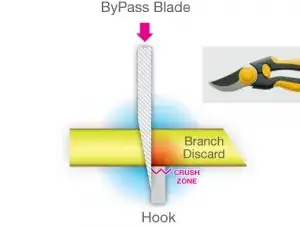I have recently bought a bypass lopper and apparently there is a correct way to position the blade when cutting; that is, reversing the position would damage the branch.
gardenmyths.com claims:

fuf.net makes the same claim:
Apparently, one side of the branch gets crushed when cutting. Is there any truth to any of this?
In the gardenmyths image, it seems more likely to me that the blade side would get crushed, because the "hook" side has less going on during the cut.
Can anyone confirm or deny this? Is there any convincing argument to any of this?
